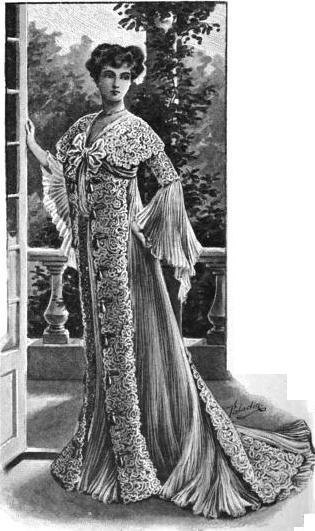
It is distinctly depressing to contemplate the purchase of warm garments for cool days before the summer has left us; and though in September we may reasonably expect a. short spell of what is known as an Indian summer, we are obliged to take cool mornings and evenings into consideration.
September is essentially a holiday month, and we like, if possible, to wear out our summer clothes, and to utilise the garments we already possess, in order that we may save our allowances in view of indulging in autumn fashions next month. Fashions are always changing, and the powers that regulate La Mode could certainly not allow even the holiday month of the year to pass without introducing novelties of some kind; and though, perhaps, it is heresy to say so, I must warn you against September modes, which often die ere October dawns.
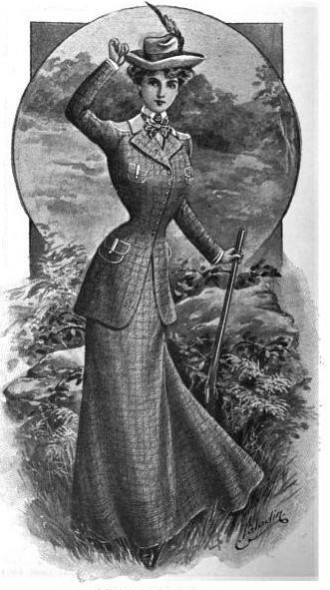
September is an excellent month to replenish one’s wardrobe as far as “things unseen” are concerned—dressing-gowns, peignoirs, bed-jackets, nightdresses, and warm undergarments in general, taking into consideration that the summer is practically over.
Many smart dust-cloaks and travelling-wraps are made in the Empire and military styles. There is no doubt that the long coat, or what is properly known as the coat wrap, will play a great part in our autumnal fashions. Indeed, it has done so for some time past, and the alpaca dust-coats that did duty in the summer were all cut with a style and chic hitherto unknown in the world of wraps. The three-quarter sac is a favourite wrap, and there are many ways of treating it.
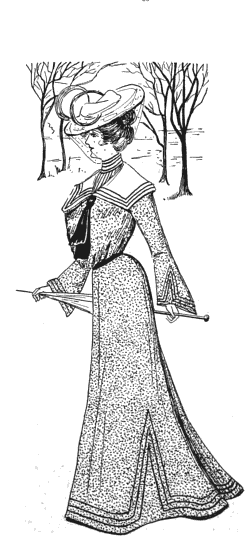
In the early part of the season it was distinctly Japanese, cut in the kimono shape, and finished with tassels. But for the autumn we want more sportsmanlike garments; therefore most of the tweed three-quarter length wraps have the sleeves cut right into the shoulder after the fashion of a man’s waterproof. Many of these are finished with a velvet collar, which I always think just saves a wrap of this description from being hard and unbecoming. Still, it is better to have a thing a little less becoming than incongruous where country clothes are concerned. Chiffony chiffons and flimsy, windblown garments look horribly out of place on an Irish bog or Scotch moor.
In Paris the bright tones of emerald green are giving place to a new pastel shade, which will come more into prominence as the autumn advances. On almost every frock there is a touch of black velvet—a pretty fashion of which the intelligent woman never seems to tire. This is particularly noticeable on hats, and millinery is more alluring than ever.
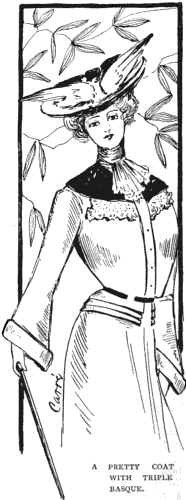
Let me implore all women of fashion to leave their picture-hats and beflowered and befeathered millinery at home. Feathers will come in on a future occasion, but they are not suitable for the country in September. [T]here is a perfect craze for Panama hats. If you must have one, have a good one. I think that every woman who has passed her first youth should soften the brim of her hat by a touch of black velvet or a draping of lace. The chief point of the Panama is its lightness, and this is of great importance in travelling headgear.

— Mrs. Eric Pritchard, The Lady’s Realm


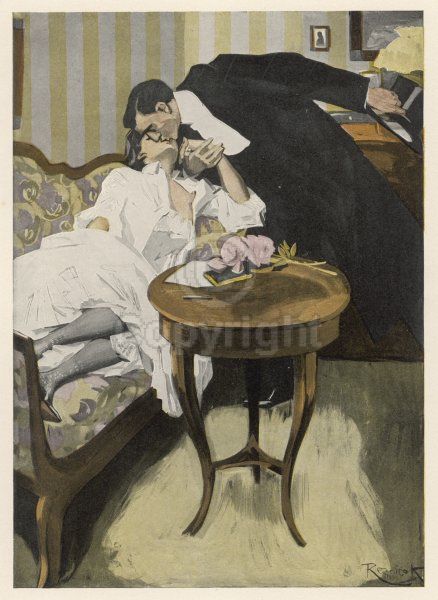
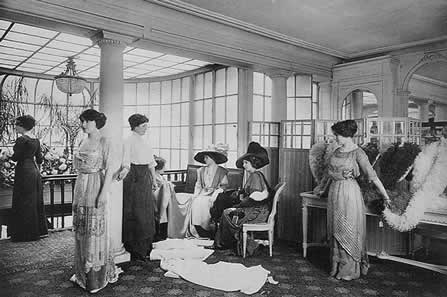
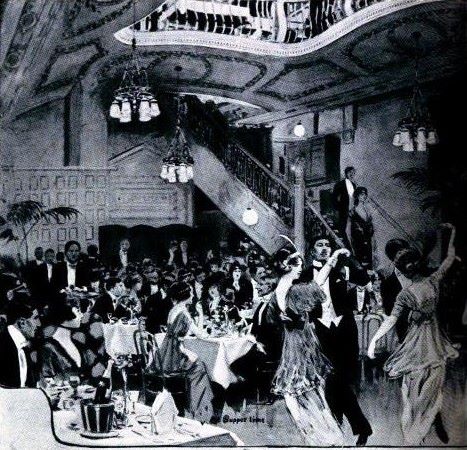
ahhh yes. I usually think of Edwardian clothes as less corsetted and more relaxed than what had been popular still in the 1890s. But except for the gorgeous first dress and the elegant last coat, the waists in the other images have been drawn as impossibly pulled in. And the bums were still being pushed out.
Perhaps 1902 was still in the transitional phase.
Edwardian fashion is divided into two phases: the S-curve (what you see here) of 1900-1908, and the slim, Directoire style of 1908-1914. However, drawings and professional photographs were always more exaggerated than what women looked like in real life! Women achieved the tiny, nipped-in waists by increasing the poof of their blouses and wearing hip pads to make their skirts flare out like a parasol.
I love the pictures you include on your blog, Evangeline. It’s interesting to think how quickly fashion changed from these in 1902 to those in the 1920s.